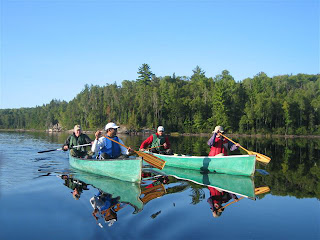In the spirit of Earth Day, courtesy of the late Carl Sagan...
Friday, April 20, 2012
Sunday, April 15, 2012
Come See Us at REI in Northern VA on April 25th
Yosemite National Park, CA (2006)
Volunteers Mike & Jen Leonard and Rick & Marge Volpe will be at the REI Store in Bailey's Crossroads, Virginia from 7-8pm on April 25th to share their experiences "Giving Something Back" with Wilderness Volunteers. They'll cover the basics of what we do, how you can get involved on one of our 2012 projects, and what you can expect on a "volunteer vacation" in America's national parks, forests, and wilderness areas. For more information and to register for this free event, click here. All are welcome - invite your friends and family.
Interested in spreading the word at your local outdoor store? Just ask the store manager or outreach director. We'd love the help! And stay tuned to the blog and newsletter for information on presentation materials and some simple steps to pulling off a successful event.
Labels:
2012 trips,
backpacking,
REI,
volunteer vacation
Wednesday, April 11, 2012
Q&A with WV's Executive Director, Dave Pacheco
Boundary Waters Canoe Area Wilderness, MN
How was WV founded? Who handles the day-to-day operations? Why take a trip with us? What can volunteers expect on a trip, and what can we do to be good wilderness stewards on our own time? Find out the answers to these questions and more on Camping Gear Outlet's Lost in the Woods blog.
Labels:
blog,
camping gear outlet,
lost in the woods,
wilderness
Thursday, April 05, 2012
Getting into Shape
After you sign up for a Wilderness Volunteers project, you should start ramping up your fitness program to be in the best shape possible for your trip. Having a goal, like getting ready for your project, is a good motivator for working out. Being fit and strong is a great way to prevent injuries in the field, and to make sure you aren't struggling to keep up with the group.
However, there are many fitness myths out there. Test your knowledge and then get moving!
 |
| John Moeller getting ready |
Contrary to this wide held belief, studies show that starting slowly and warming up while engaged in your activity is preferable to stretching before beginning. Static stretching temporarily decreases strength in the stretched muscle by as much as 30% for up to a half hour. And in several large-scale studies, static stretching did not reduce injury over those who didn't stretch prior to working out.
Myth 2. Guzzling water and electrolytes prevents cramps.
Cramps weren't related to hydration in two studies where both the well-hydrated and less-hydrated were equally likely to experience cramps. It is believed that cramps are due to exertion, fatigue and the accompanying biochemical processes. Again, starting slowly and then ramping up activity seems to help prevent cramping.
Myth 3. Taking ibuprofen before a hard effort prevents sore muscles afterward.
Competitors who popped ibu before distance runs were just as sore as those who didn't take the pills. More troubling, they displayed more blood markers of inflammation than the other competitors. The thinking now is that frequent use of NSAIDS blunts the ability of muscles to adapt to exercise. Save the ibuprofen for legitimate injuries or afteruse soreness. Muscle pain is part of the body's training response.
Myth 4. No pain, no gain.
This myth holds the most potential for harm. While you should expect to have some degree of soreness a day or two after working out, this is very different from having pain while you are working out. A fitness activity shouldn't hurt while you are doing it, and if it does, you are either doing it wrong or already have an injury. Don't work through the pain, experts agree. They say that if it hurts, stop, rest and see if the pain goes away. If it doesn't go away or increases after you start to work out, see a doctor.
Tell us what you are doing to get in shape for your trip.
Subscribe to:
Posts (Atom)








